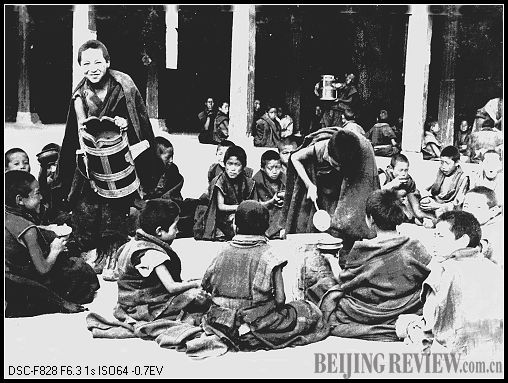|

The child monks aged five to 10 had meals in the open air in the Gandain Monastery. Those children mostly came from the poor families in the rural and pastoral areas. They became monks to get food and change their fate. Before entering the monastery, their parents should also hand in redemption fees to the lord to whom they were subject and then beg an intermediary to introduce their children to a teacher and learn sutras in the monastery. These child monks led a collective life. According to the stipulation of the monastery, they had to live in the "Kangcun"dorms designated by the monastery and could not beginning study at once. They should do some sundry work for their teachers and the monastery. Hence, their life was extremely hard. Everyday, they attended the collective sutra chanting activity in the morning, at noon and in the afternoon in the respective Kangcun. If they were late or left early, they would be expelled. Through review, some child monks were considered to be "eligible" and could be enrolled formally to be a student monk. Subsequently, they began to learn Tibetan letters, spelling, reading, writing, common glossary and simple grammar under the direction of teachers. Once they mastered the basic knowledge of Tibetan language, they could begin to learn sutras. They spent fix or six hours reading and reciting sutras everyday, besides sundry chores (1958)
|